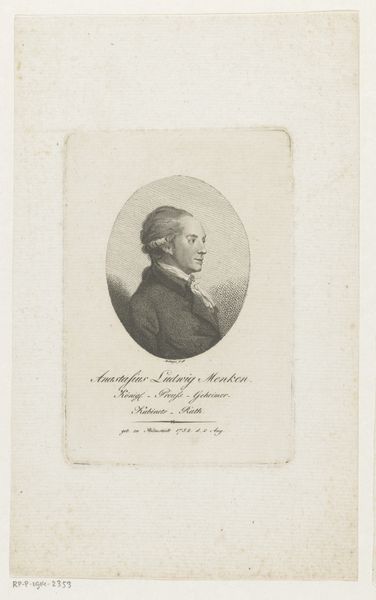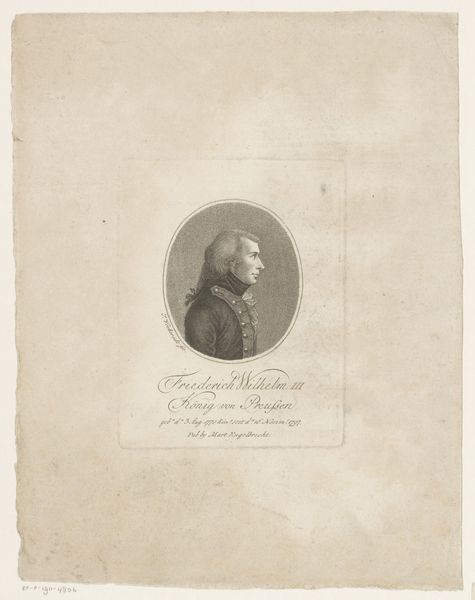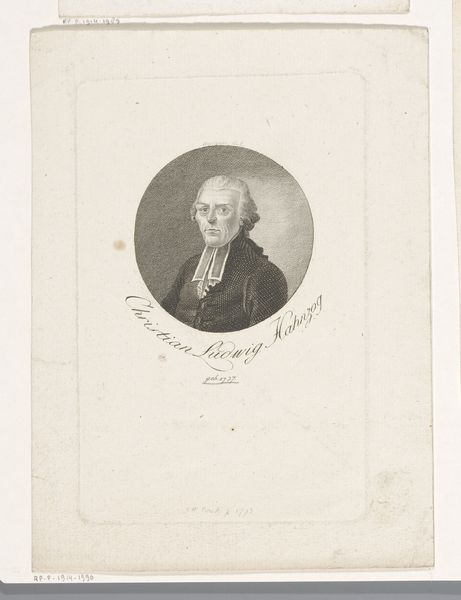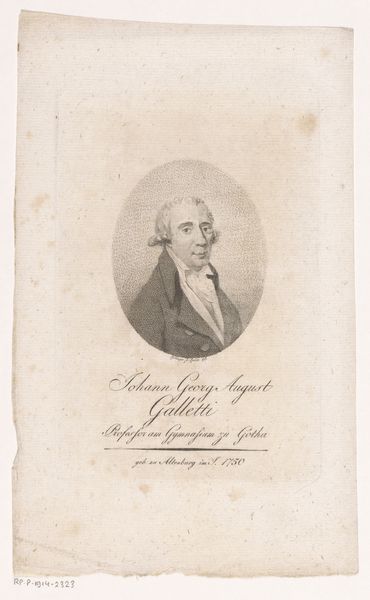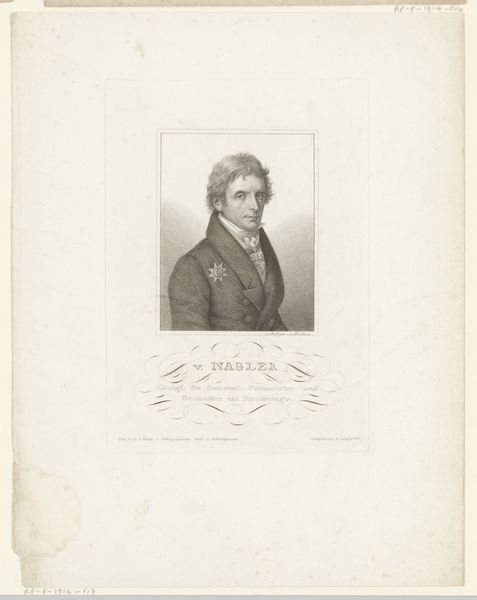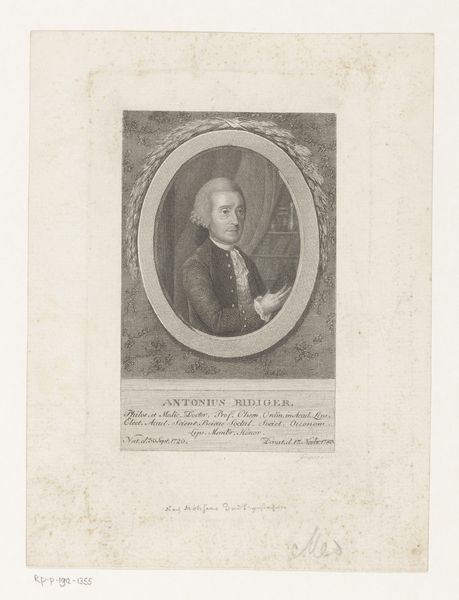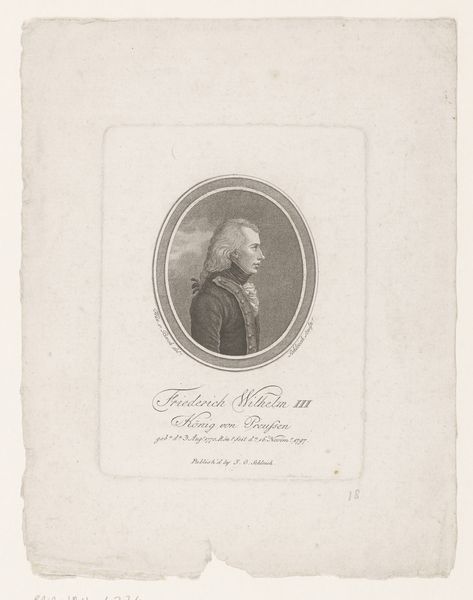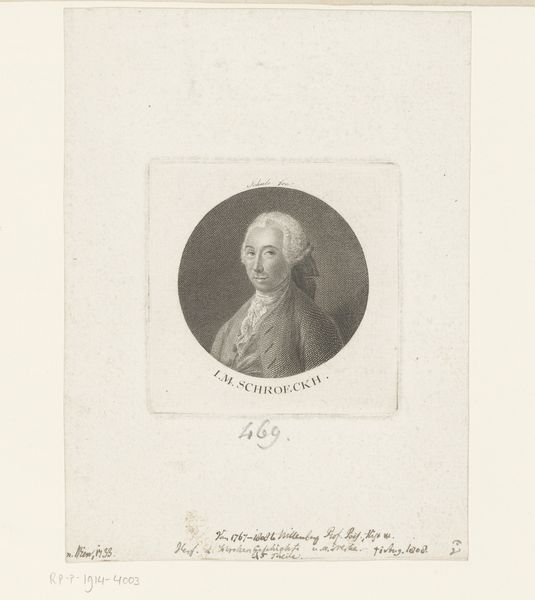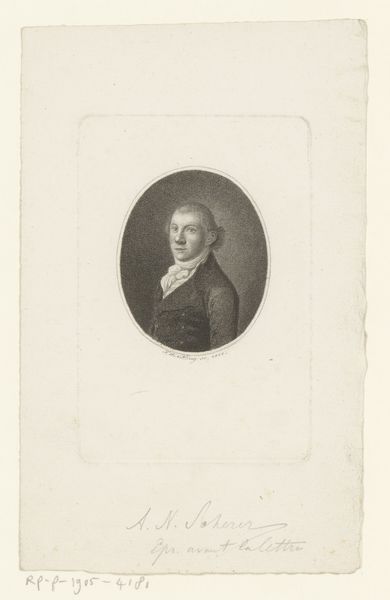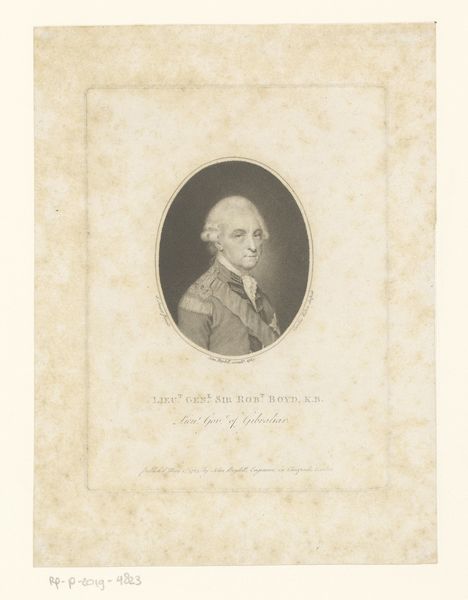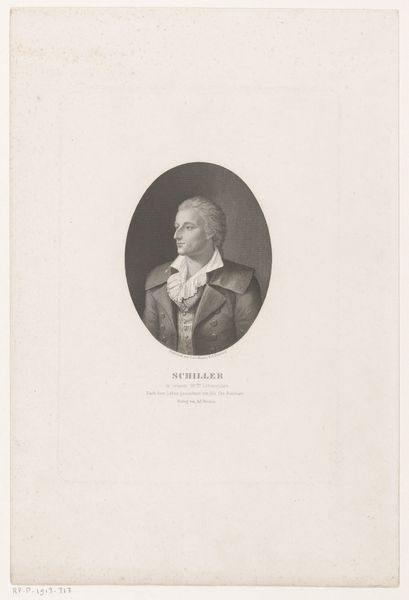
print, engraving
#
portrait
#
neoclacissism
# print
#
old engraving style
#
engraving
Dimensions: height 291 mm, width 210 mm
Copyright: Rijks Museum: Open Domain
This is a portrait of Christoph Wilhelm von Hufeland, created by Johann Christian Ernst Müller using the technique of etching. Etching is an indirect printmaking method, in which lines are incised on a metal plate with acid. Here, the technique yields a range of tones, from deep blacks to delicate grays. Look closely at the crisp, precise lines that define Hufeland's features and clothing. Each of these lines would have been carefully drawn through a protective layer of wax, then bitten into the metal by the acid. The resulting plate would then have been inked and pressed onto paper, creating a reversed image of the original design. The labor-intensive process required skilled craftsmanship, reflecting the values placed on technical expertise. This print not only demonstrates Müller's mastery of the medium, but also provides insight into the printmaking industry, and its role in disseminating images and knowledge during this period. By understanding the material and processes involved, we can appreciate the artistry and cultural significance inherent in this seemingly simple portrait.
Comments
No comments
Be the first to comment and join the conversation on the ultimate creative platform.
